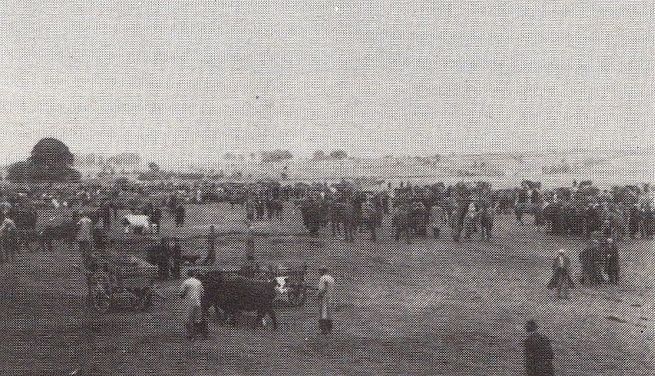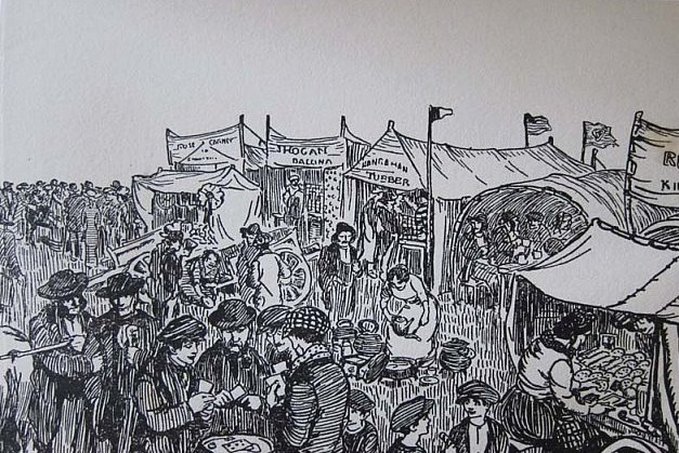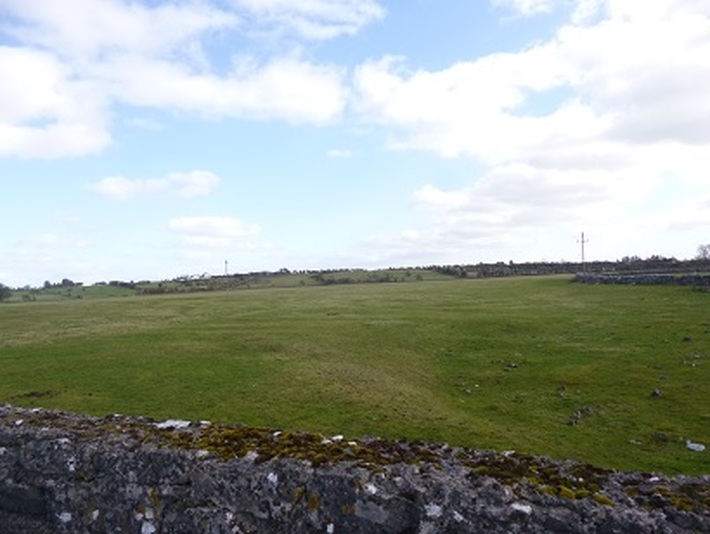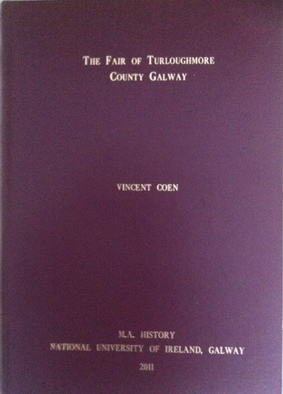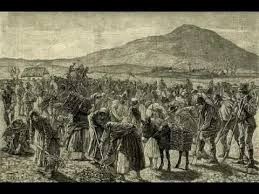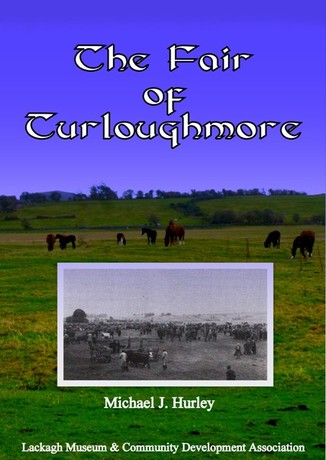The Fair of Turloughmore
The Fair of Turloughmore was one of the most successful fairs in Ireland for over three centuries. It took place twice a year for at least two centuries on a 57 acre field, known as the Turloughmore Common, 13 miles North East of Galway City.
It was a major social and economic event in the farming calendar during that time. It was a microcosm of Irish life during the penal laws, the land wars, the fight for Irish Independence, two world wars, sovereign and economic independence and the making of modern Ireland.
The fair attracted buyers and sellers of livestock, traders and hucksters, the general public, newspapers reporters, and the police to try and keep the peace. It is remembered locally for the buyers who travelled from far away as Offaly, Meath, Westmeath and Kilkenny. It provided valuable work for local drovers who subsequently walked the cattle to the Railway Station in Athenry for transport by train to graze greener pastures.up the country.
However, the fair was all too often overshadowed by the notorious faction fighting that occurred at various times. The most significant incident occurred in 1843 when the police opened fire on the factionists, resulting in a number of deaths. Its demise largely coincided with the development of the Livestock Marts in Tuam and Athenry during the 1960s.
RTE Countrywide interview 30th July, 2016 Darragh McCullough
Michael J. Hurley talks about the Fair on the Turloughmore Common.
Louise Denver met with Michael J. Hurley, Jarlath McDonagh and Frank Kearney to talk about the Fair of Turloughmore.
Listen to the interview
The origin of the Fair
King James I granted a patent for a fair to Sir John Burke of nearby DerryMcloughny on 6th August,1616. Fair days were held on 1 August and 18 September.
Memories of the Fair-John McDonagh
Thesis on the Fair of Turloughmore by Vincent Coen
|
In 2011, Vincent Coen completed a superb thesis on The Fair of Turloughmore through an M.A. History in NUIG.
The thesis examines fairs in general as well as the origins and rise of the fair in Turloughmore. In particular, it looks at the infamous faction fighting that Turloughmore became associated with. Finally, it examines the decline of a once great fair as the livestock marts became the norm for the buying and selling of livestock and shows the efforts in recent times to revive the fair. The thesis gives a local perspective on the Socio-economic conditions prevailing during the nineteeth and twentieth centuries in Ireland. It accomplishes a reconstruction of a treasured piece of history in our parish and also serves as the primary academic paper on the topic. |
John J. CroninClick the link below to read a paper by UCD Historian John J. Cronin on the fair of Turloughmore.
The article was printed in our 2001 publication, titled "In their own words.." |
1843 MurdersIn 1843, a disturbance took place at the fair in which 3 men, Greally, Callaghan and Mullen were shot by the Police. A ballad about the murders and subsequent trial of the police and their commanding officer, Brew (who died the day before the trial) was composed.
|
The BookThe Fair of Turloughmore has been mentioned in newspaper articles since the late 1700's.
Reports range from the many faction fights, murders and pickpockets to stock prices, train connections and almanac notices. Lackagh Museum Committee member Michael J. Hurley has painstakingly compiled these along with local anecdotes into a wonderful book which can be downloaded for $7.99 from the link below. |
